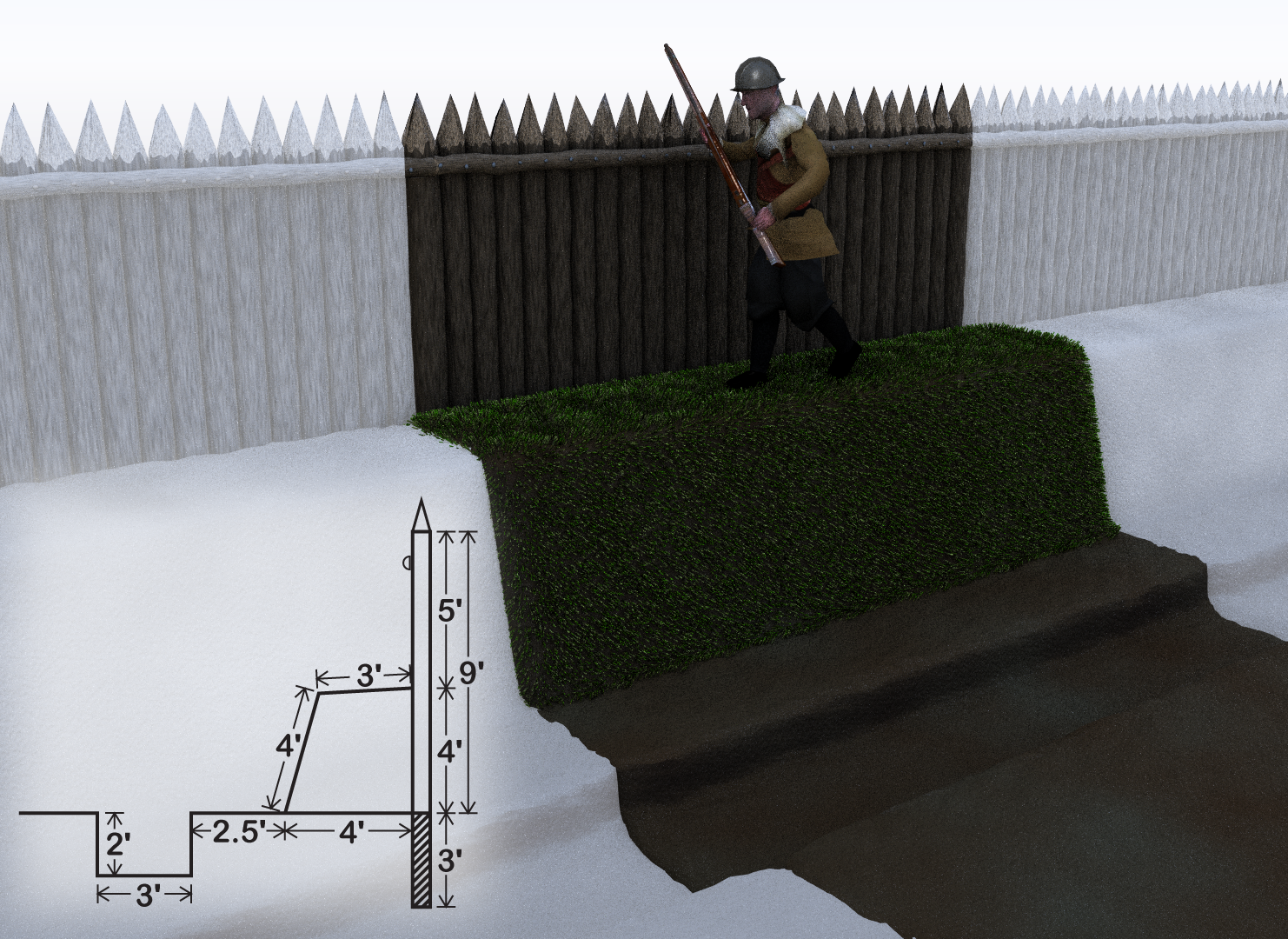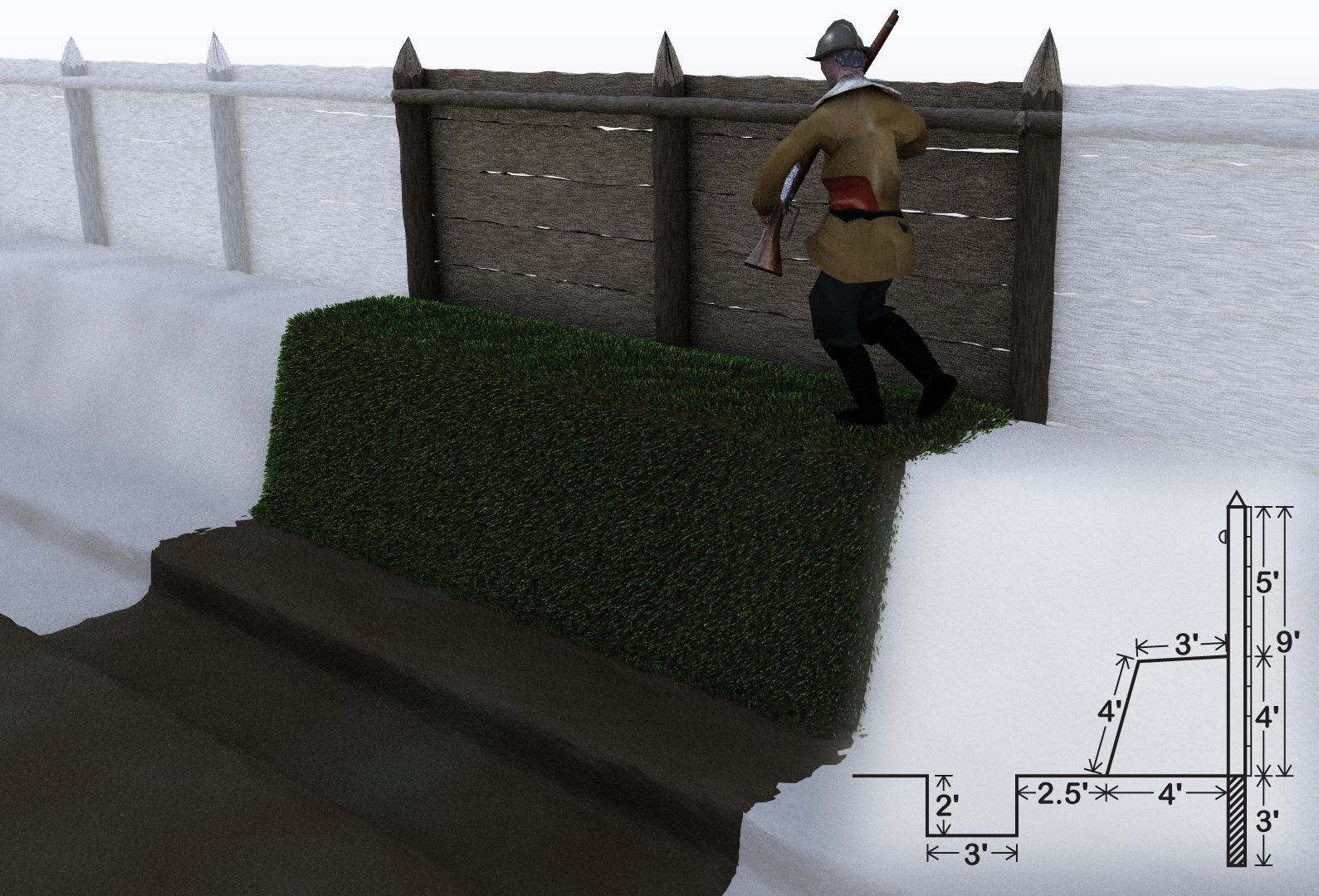Web Appendix #5: The Palisade Wall and The Plank Wall
References for Illustrations 5a and 5b: - Details of the Walls built to secure the borders of the Dutch settlement on Manhattan against the English and Native Americans from 1653 to 1664. This early Wall gave New York's Wall Street its name.
Fernow, Berthold editor, The Records of New Amsterdam from 1653 to 1674 Anno Domini (New York: Knickerbocker Press, 1897) Vol 1, page 73 has original design specification:
"The palisades must be 12 feet long, 18 inches in circumference, sharpened at the upper end and be set in line. At each rod a post 21 inches in circumference is to be set, to which rails, split for this use shall be nailed one foot below the top. The breastwork against it shall be 4 feet high, 4 feet at the bottom and 3 feet at top, covered with sods, with a ditch 3 feet wide and2 feet deep, 2 and a half feet within the breastwork. The length of the ground, to be lined with palisades is 180 rods, the end of the rods being the last of the money. Payments will be made weekly in good wampum." All these are the Dutch measures (rods, feet, inches) see below for metric and English equivalents.
Fernow, Vol 1, page 72-74 March 17-19, 1653 has discussion of original palisade design and its replacement by the plank design, which was the first one built in 1653. Also included there are the schematics as shown in Illustration 5a The Palisade Wall (First Design) and Illustration 5b The Plank Wall (Second Design).


| Conversions for Dutch Measures as used in Text: https://en.wikipedia.org/wiki/Dutch_units_of_measurement | |
| Dutch Measure (metric/English) | |
| log length | 12 feet long (3.4m/11.1') |
| circumference | 18 inches (46cm/1.38') |
| post circumference | 21 inches (54cm/1.58') |
| rail below top | one foot (28cm/11.1") |
| rail thickness | 3 to 4 inches (8-9 cm/3") |
| log above ground | 9 feet (2.5m /8'4") |
| height of breastwork | 4 feet (1.13m /3.7') |
| plank length | 15 feet (4.25m/12.5') |
| plank width | 1 foot (28cm/10") |
| Note: Designation for English feet above ('); for English inches (") | |
